Plastics are some of the most fragile artefacts in museums. Analytical chemistry helps ensure they are preserved and displayed safely
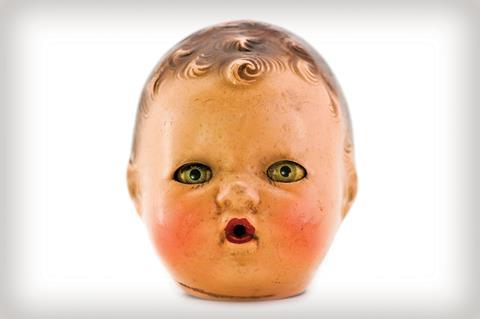
Plastic has a bad reputation for sticking around longer than we would like. There are millions of tons of it in landfill globally. It degrades so slowly that plastic waste keeps piling up. Lots of plastic ends up in the ocean where it can break up into microscopic pieces, known as microplastics, that harm the sea creatures that ingest them.
These problems make it easy to forget that, when used responsibly, plastics are wonderful inventions. Their versatile properties have enabled extraordinary developments in science and engineering. For example, without their protective spacesuits made mostly from synthetic polymers, Neil Armstong and Buzz Aldrin could not have survived their moonwalk in 1969. Plastics have also saved lives on Earth, having had major roles in artificial organ development. And artistic innovation has benefited from plastics – some of the most valuable fine art and design created in the last 70 years is made of plastic.
In your class
Encourage students to take a closer look at the plastic involved in our daily lives and consider its versatile applications. Use the downloadable activities to challenge learners to identify five different polymers mentioned in this article based on their repeating structure. Introducing learners to unfamiliar structures will inspire and motivate them to think about future opportunities in chemistry.
While most of us do not own spacesuits or priceless pop-art sculptures, we all have homes filled with plastic. It encases the food we buy, it is in our furniture, our clothes and the bank cards and notes in our wallets. Life would be unrecognisable without it.
A huge amount of our recent cultural heritage is plastic, so the proportion of plastic objects in museums is growing and growing. ‘Plastic is probably not the first material that comes to mind when thinking about the British Museum,’ admits Fabiana Portoni, a senior preventive conservator at the London museum. Fabiana is part of the museum’s collection care working group that looks after a collection of over eight million artefacts; ‘at least 15,000 of these objects are made of, or contain, plastic components,’ she says. The museum has a wide variety of plastic objects, from snowmobiles to alarm clocks.
Looking after the plastic objects is not easy. Given their reputation for persisting in landfills, it is surprising that plastics are some of the most fragile objects found in museums. Plastics degrade over time, and sometimes develop unsightly disorders in the process, like yellowing, shrinking, blistering and sweating. Even more concerning is that some plastics degrade suddenly, spectacularly and dangerously.

Perilous polymers
Plastics can be damaged by light or air. Ultraviolet radiation initiates reactions inside plastics that break up the polymer chains. Oxygen tears electrons from the long polymer chains that entwine in plastics, which breaks the chains and weakens the structure. Moisture also breaks off polymer side groups or scissors up chains by hydrolysis reactions. It is not just the polymer chains that change over time. The additives that give plastics flexibility, known as plasticisers, can leach out, and the dyes used to make plastics colourful can fade.
Working out how to slow these reactions in museum objects is complicated. Fabiana points out: ‘the term plastic is quite a broad term and includes a variety of semi-synthetic and synthetic materials, as well as some natural polymers such as shellac or rubber’. Each different type degrades in a different way.
At least museums do know which types need careful monitoring. ‘There are five plastics that have been identified as ‘problem plastics’ in museum collections: cellulose acetate, cellulose nitrate, plasticized polyvinyl chloride (or PVC), polyurethane foam and rubber. These are inherently unstable and more prone to degradation,’ explains Fabiana.
Download this
Life would be unrecognisable without plastic, for age range 14–16
Working in small groups, learners will analyse in depth their reliance on plastic in their everyday lives and consider whether alternatives are available. Download the worksheet as MS Word or pdf.
Puzzling polymers, for age range 14–16
Challenge learners to identify tricky polymer structures from this article using a series of clues. Download the activity sheet as MS Word or pdf.
Life would be unrecognisable without plastic, for age range 14–16
Working in small groups, learners will analyse in depth their reliance on plastic in their everyday lives and if there are alternatives available.
Puzzling polymers, for age range 14–16
Challenge learners to identify tricky polymer structures from this article using a series of clues.
Download these activities from the Education in Chemistry website: rsc.li/32lkEBm
Cellulose nitrate degradation is dramatic. First developed in 1856, cellulose nitrate was used in a variety of things from imitation tortoiseshell accessories to hand-painted Disney animations. It gives off nitric acid as it deteriorates. The process is autocatalytic, meaning the acid catalyses further depolymerisation and more gas production. The process starts slowly but gains speed suddenly – so suddenly that this material can spontaneously combust.
Cellulose acetate was developed in the early 20th century. It was designed to replace cellulose nitrate when people realised how flammable it was, explains Katherine Curran, an associate professor at the University College London (UCL) Institute for Sustainable Heritage. Katherine has studied cellulose acetate degradation. Although less flammable, it is still problematic as it also degrades autocatalytically. ‘It’s unstable because it reacts with moisture in the air. Water will hydrolyse the ester groups in cellulose acetate, causing it to revert back to cellulose. This leads to the formation of acetic acid which catalyses the hydrolysis reaction,’ says Katherine.

A telltale smell accompanies this process. Acetic acid is vinegar, so degrading cellulose acetate objects smell vinegary. ‘It’s often referred to as “vinegar syndrome”,’ says Katherine. An additional problem is that ‘as acetic acid is a volatile molecule, it will move through the air and can catalyse hydrolysis in other objects.’
Because of their habit of damaging themselves and other objects nearby, it is vital that museums identify and store their cellulose nitrate and cellulose acetate artefacts carefully. ‘Most plastics benefit from being kept in the dark, as cool as possible and at relatively low humidity,’ notes Fabiana. ‘These conditions help limit deterioration reactions initiated by light and heat, and hydrolysis reactions exacerbated by high humidity.’ However, it is not always possible to keep objects in these conditions, as museums also have a duty to display their artefacts to the public.
There are other complications to plastics storage. ‘Unfortunately, the ideal conditions for one type of plastic might not be the best for another,’ says Fabiana. Cellulose esters benefit from being stored in ventilated spaces with activated charcoal or zeolites to absorb the toxic gases they emit. However, if you try to absorb the plasticiser that diffuses out of PVC as it degrades, the PVC is encouraged to release more, worsening the problem. Rubber is another plastic that requires specific conditions. ‘Rubber degrades by an oxidation reaction so oxygen removal can be beneficial,’ Fabiana adds.
Better the plastic you know
‘It is crucial to identify what type of plastic the objects are made of,’ stresses Fabiana. Only then can they be stored and displayed safely. The British Museum uses Fourier-transform infrared spectroscopy, or FTIR – ‘a really useful tool to confirm the plastics present in the objects,’ says Fabiana. Importantly, FTIR is a non-invasive technique, meaning there is no need to take a sample from the object to get a reading.
Carien van Aubel is an independent conservator specialising in modern and contemporary art and has used FTIR a lot to identify plastics in artworks. ‘This technique measures the movement of the different components in a polymer which results in a graph,’ she explains. ‘Each polymer has a specific dance by which you can recognise it.’
Identification is not always straightforward. ‘Sometimes additives like colourants and fillers are added to the plastic to create specific properties. This can interfere with the spectrum which can make it more difficult to read,’ says Carien.
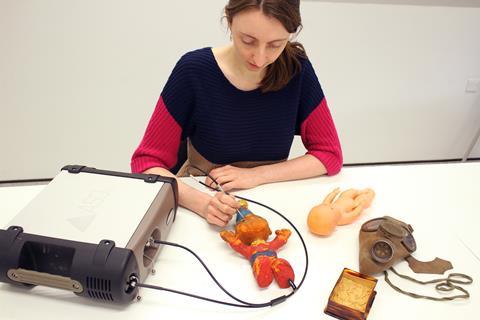
Researchers are trying to expand and improve the ways plastics can be identified and monitored. At UCL, Katherine is investigating if plastics can be identified by the composition of the molecules they emit as they degrade. She thinks this method could also help museums to know how healthy their plastic artefacts are. ‘It’s a similar idea to sniffing the milk in your fridge to see if it’s still fresh,’ she explains. Lots of different degradation processes lead to volatile organic compound (VOC) production. This includes things humans can smell, like vinegar from cellulose acetate, and others that we cannot. Analytical tools can detect whether a plastic is starting to degrade before humans can.
One technique her team has tested is called solid phase microextraction gas-chromatography mass-spectrometry (SPME-GCMS). SPME fibres are placed near objects to pick up their VOCs. The fibre is inserted into a GCMS machine to see what the VOCs are.
More recently, Katherine has been testing out nuclear magnetic resonance (NMR) spectroscopy to see whether it can detect signs of cellulose acetate degradation early. ‘It allows you to see how many acetate groups on average there are left on the polymer, called the degree of substitution or DS. The DS will decrease as degradation proceeds,’ she says. NMR can also be used to measure the concentration of plasticiser in cellulose acetate, so you can see if it is being lost and how quickly. You can also tell the type of plasticiser. NMR does have a downside though: ‘you need to take a sample, which is not always allowed from a museum object. But these samples can be very small,’ says Katherine.
Scientific instrumentation is best when you want to be one hundred per cent certain, says Carien. However, many museums do not have access to analytical equipment, so she has helped develop an online tool that museums can use to identify plastics. She noted characteristics of lots of objects that had been firmly identified by spectroscopic analysis. She then turned these characteristics into a questionnaire that museum staff can follow to identify plastics.
Scientific instrumentation is best when you want to be one hundred per cent certain, says Carien. However, many museums do not have access to analytical equipment, so she has helped develop an online tool (bit.ly/31PMmpw) that museums can use to identify plastics. She noted characteristics of lots of objects that had been firmly identified by spectroscopic analysis. She then turned these characteristics into a questionnaire that museum staff can follow to identify plastics.
For example, polyethylene and polypropylene can be easy to identify. ‘Polyethylene often has a waxy touch and when it is older it can also have a very distinctive smell which can be described as the smell of old plastic bags or Tupperware,’ says Carien. She adds, ‘if a plastic object has a hinge made of one piece, you know for certain this must be polypropylene.’ This plastic is flexible and strong enough for the job. ‘Have a look in the bathroom to see if you can find one on your shampoo bottle.’
As plastic science and manufacturing continue to evolve at speed, conservators will have plenty of work to do as new plastics with unknown ageing properties work their way into museums. Katherine’s team wants to understand how plastics degrade in more detail. They are developing a mathematical model to predict the rate of cellulose acetate degradation and see how temperature and humidity affect it. ‘We’re also looking at how different degradation mechanisms interact with each other; vinegar syndrome and plasticiser loss affect each other for example.’
Article by Rowan Frame, a trainee paintings conservator and former deputy editor of Education in Chemistry. Resource by Ian Davies, head of chemistry at Winstanley College
Recommended resources
- Use the article, Turning mixed plastic waste into natural gas, and the accompanying starter slide to give context to learning about polymers, recycling and cracking alkanes.
- Consider alternatives to disposable plastic period products with a life-cycle assessment activity.
- Keep Barbie and friends looking their best with these resources on plastic conservation.
- Explore how Océane uses seaweed to make packaging more sustainable in her role as an R&D chemist.
- Use the article, ‘Turning mixed plastic waste into natural gas’, and the accompanying starter slide to give context to learning about polymers, recycling and cracking alkanes: rsc.li/2Q2BbaL
- Consider alternatives to disposable plastic period products with a life-cycle assessment activity: rsc.li/2Q1ZhCy
- Keep Barbie and friends looking their best with these resources on plastic conservation: rsc.li/2Q1ZhCy





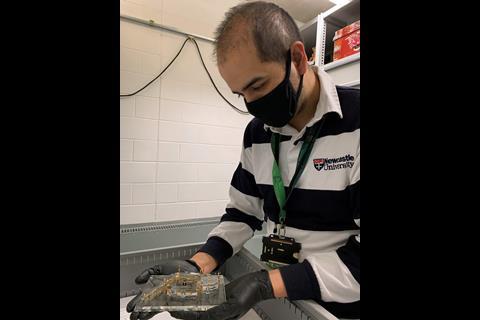
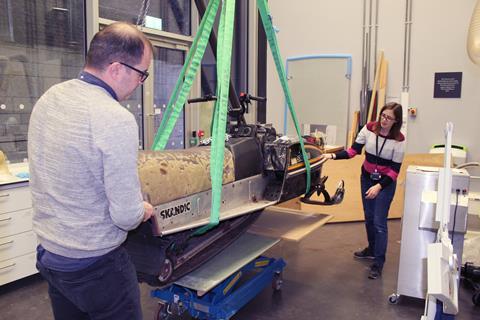
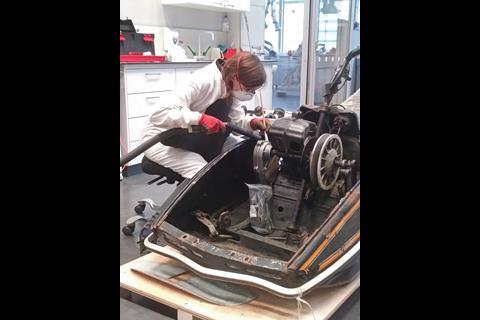









No comments yet